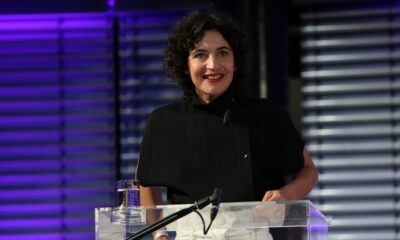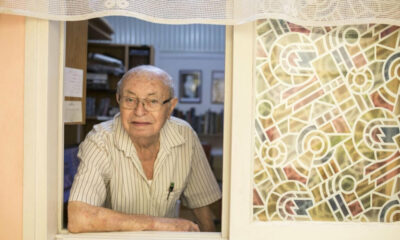Features
“Antisemitism from the Crusades to the Holocaust”
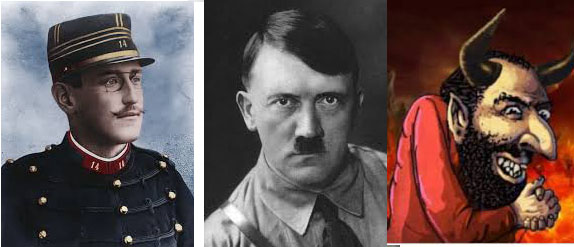
Presented by LIONEL STEIMAN at the Lanny Remis Speakers Forum, May 8, 2025.

One of the questions I wanted to answer in my course on the history of antisemitism was why culturally assimilated European Jews seemed blind to the rising tide of antisemitism during the years in which they had grown up? Of course they didn’t have the benefit of hindsight. They knew of the pogroms, of course, but they were in Russia, not in such sophisticated centres like Vienna, Prague, and Berlin, cities to which Jews from the east had flocked by the thousands, taking advantage of the opportunities offered during the rapid industrialization of the later nineteenth century. In Vienna they would eventually become the propertied and educated elites of the upper middle class. What they underestimated was the danger they faced from masses prone to the appeals of antisemitic demagogues.
The reason was that these Jews were the beneficiaries of what was called “Jewish emancipation,” the removal of age-old restrictions on Jews that had limited what they could do, where they could live, and much more. Emancipation facilitated the admission of Jews to society on terms of equality with other citizens. They were granted the right to vote, freedom of movement, access to education, and other areas from which they had been barred. France was the first country in Europe to emancipate its Jewish population, which it did during the French Revolution. Subsequently, the process of ‘Emancipation’ was launched everywhere in Europe except the Russian Empire, and by the later 19th century was relatively complete.
Emancipation had been the product of the so-called Enlightenment, when philosophers and rulers got the bright idea that Jews, whom they had regarded as scarcely human, would stop being Jews if only they were given an opportunity to be like everyone else. If they were given freedom, the right to vote, and access to other occupations than peddling and money-lending they would lose the negative characteristics associated with Jews. This Jewish ‘character’ was not considered a matter of ‘race’ or ‘blood’, but was seen as a product of the environment in which Jews were forced to live. But behind these novel ideas lay centuries of popular hatred and prejudice rooted in religion and superstition.
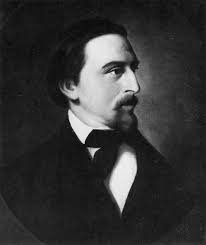
So it was almost inevitable that there would be a popular reaction against the emancipation of Jews, and attempts made to roll it back. Jewish entry into areas in which they’d never before been seen made people uneasy, to say the least. And because Jews in western Europe were abandoning their distinctive dress and manner, thus assimilating and becoming indistinguishable from non-Jews, their presence came to be feared all the more. Opponents of emancipation demanded the re-imposition of restraints and restrictions on Jews, many of which dated back centuries. They organized and gave themselves a name intended to distinguish themselves from the religious bigots they scorned. Their “The League of Antisemites”, was founded in 1878 by a journalist by the name of Wilhelm Marr.
The word ‘Antisemite’ was a totally new, totally invented word. But it had a scientific ring to it, as did so much else in this age of scientific progress. Antisemitism dissociated itself from the age-old anti-Jewish prejudices rooted in religion and legend, claiming instead to have a basis in science. The word ‘Semite’ was taken from the field of philology and referred to a grouping of languages, though soon it was referring to a category of people as well. And since Jews were the only “Semites” in Europe, it was they whom anti-Semites opposed. Soon, inflammatory antisemitic publicists and their products proliferated in various countries, most especially in France and Germany, the countries where ‘Emancipation’ had proceeded furthest, and needed to be rolled back. Meanwhile, beneficiaries of Emancipation dismissed antisemitism as a matter for the gutter, or for cynical politicians
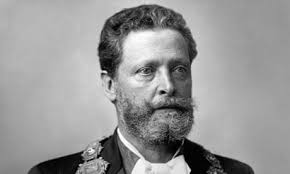
The most prominent politician to exploit antisemitism before Hitler was Karl Lueger, the famous mayor of Vienna, who used it to woo the masses. During his tenure from 1897 to 1910, Vienna became the most advanced city in the world: public facilities such as gasworks, public transit, and housing were unmatched anywhere else. And nowhere else in Europe did Jews feel more secure. Lueger was a charming man; with Jewish friends, he was often seen attending Jewish marriages and bar mitzvahs. When the contradiction was pointed out, he replied, “I decide who’s a Jew.” Antisemitism was socially acceptable and taken for granted everywhere. After all, compared to Jews in Russia, with regular pogroms claiming hundreds of lives, Jews in Vienna, Prague, Paris, or Berlin were safe and could relax. They would never have dreamed of joining the hundreds of thousands of Jews fleeing Russia for America every year. In fact, they scorned them, and their Yiddish, which they regarded as a “jargon and not a language at all.
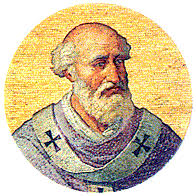
Nothing remotely like the Russian pogroms had occurred in the West since the First Crusade of 1095. Prior to that, the Jews of Europe had enjoyed relative peace and security. And because their value as physicians, merchants, and scholars were prized by rulers, Jews often enjoyed privileges later denied them. So why had everything changed in 1095, with the launch of the first Crusade, the armed campaign to secure recapture the Holy Land from Islam? When Pope Urban II proclaimed the Crusade he made clear there was no act more deserving of heavenly reward than to die on Crusade: to do so was assurance of immediate salvation. But when the first crusaders set out for the Holy Land, they asked themselves: “Why are we going all the way to the Jerusalem to defeat Christ’s Muslim enemies when the Jews who murdered him are right here among us?” So as the armies of French Knights set out for the East, they plundered and massacred age-old Jewish communities en route, and even made significant detours to do so. Some of the Jewish victims believed their suffering heralded the coming of the Messiah. Others thought the Pope had promised a blanket pardon to anyone who killed a Jew. Jews could save themselves by becoming Christian, and some were offered baptism. Such conversions were rare. Far more common was mass ritual suicide, or “Kiddush ha-Shem”, sanctification of the divine name.
Within a century, popular pressures moved the Pope to decide to legislate that Jews everywhere be required to wear some distinguishing mark. Specifics were left to individual countries. France required Jews to wear a yellow patch on their cloaks; Germany required a yellow, cone-shaped hat. To this day, ‘yellow’ has negative connotations, notably that of cowardice. The year of this legislation was 1215: from that point on, Jews are seldom depicted without such insignia, whether in art, sculpture, or other illustrations. This began a process that continued for centuries: the separation of the ‘image’ of the Jew from their human reality. The very word ‘Jew’ became a synonym for various undesirable qualities, triggering repugnance by its very mention.
This separation of the ‘image’ from the individual allowed Jew-hatred to flourish in the absence of Jewish people. In the mid-1970s a student of mine from Sioux Lookout told me that before he came to Winnipeg he thought that “Jew” was simply a word for crooked bargaining. The boy was himself no anti-Semite; he seemed totally open-minded, and eager to learn. I found that people with Jewish friends or a Jewish doctor or other professional could still hold antisemitic views simply because their prejudices were independent of their lived experience. A colleague from a town in the north of England told me that folks there seemed to have three categories of Jews: there were “powerful international Jewish financiers”; there were the Jews in the Bible- the “Israelites”; and there were Jewish shopkeepers, who were well liked but who didn’t affect their prejudices about “the Jews.”
Where did all this begin, this separation of “Jews” from the individual human beings they really were? We have to go back to the very beginning of Christianity, which began as a radical messianic sect of Jews, whose leader, a young rabbi called Jesus, was tried and executed by a Roman court under the authority of the Roman Governor. His followers believed he was the “Messiah” who would transform Israel. Their foremost missionary was Saul of Tarsus, much later known as St. Paul. Although Saul’s original mission was to persecute the followers of Jesus, he underwent a conversion “on the road to Damascus” and joined them. Paul’s sermons and letters became central books in what eventually became the New Testament. Because Greek was the common language of the eastern Mediterranean world, Saul became Paul, and “Messiah” became ‘Christos’. Soon Christians and Jews became ever deeper entrenched in an antagonistic relationship. Christians couldn’t understand why Jews refused to recognize the truth and accept Christ. Either they must be blind, or stupid. Since obviously they were neither, they must be evil. And so in the New Testament’s book of John they are “sons of the devil” and bound to do his work. (John 8:14) During the Holocaust, some people cited the passage from Matthew in which the Jews implicitly confess their guilt for the death of Christ: “His blood be upon us and our children” (Matthew 27:25).
Throughout the centuries that followed, Jews were depicted in various art forms as devil-like creatures, with horns and tails and cloven feet. Sculptures on churches and public places showed Jews with blindfolds signifying they were blind to truth. A particularly popular motif was the so-called “Judensau”, which depicted a rabbi lifting the tail of a huge pig to look for his Talmud, while other Jews gathered beneath the pig to suckle. Variations of the “Judensau” can still be found sculpted in public places in Europe. Then there was the so-called “foetor judaicus.”, the innate stench of the Jewish body. And it only got worse.
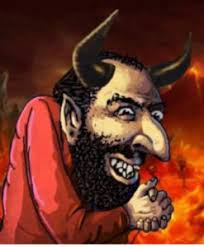
The Church Fathers who laid the theological and pastoral foundations of Christianity defined Jews as a threat to the moral and political foundations of Christendom, just as they were a threat to the soul of every individual Christian. Some Church Fathers accused Jews of killing Christ, thus making all Jews thereafter guilty of the crime of “Deicide”, killing God! Scores of other accusations against Jews proliferated. The logic was simple: for if you would kill the Savior, what else wouldn’t you do? Soon Jews were being accused of all manner of outlandish crimes: spreading plague by poisoning wells; killing Jewish children to use their blood in baking matzoh; and even drinking Jewish blood in their rituals. If you would believe what was patently impossible- since drinking blood was taboo for Jews, what wouldn’t you believe? And thus, reasoned one prominent historian of antisemitism, the road to Auschwitz was begun over a thousand years ago.
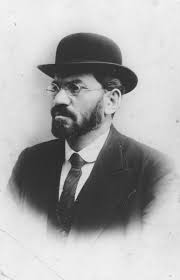
Incidentally, the last “blood libel” trial was held in Kiev (then in the Russian Empire) Russia in 1913. The verdict was ambiguous: yes, the crime had indeed been committed, but the accused, Mendel Beilis, was not the murderer. Although both sides could claim victory, the trial helped perpetuate the myth of ritual murder: the killing of a Jewish child to use its blood to bake matzoh.
But if the “road to Auschwitz” was begun a thousand years ago, why wasn’t the attempt to exterminate Jewry also begun a thousand years ago? After all, in the 4th century C.E. Christianity became the official religion of the Roman Empire; the Romans made life difficult for Jews but made no attempt to kill them all. Why not? The answer lies with the greatest of the Church Fathers, St. Augustine (354-430). It is true, he wrote, that the Jews are guilty of the crime of Deicide, of killing the Savior. So they should be persecuted, but not too much; and they must be made to suffer, but not too much. And they should not live near Christians. Their suffering and eternal “wandering” would be proof of their guilt; and they would be living (if unwilling) witnesses to the truth of the Christian faith. This idea was repeated in variations by subsequent Popes, who in any case held out the possibility that Jews could avoid all this by converting. The Jewish communities of Europe, despite some ups and downs, were able to live relatively peaceful lives. Theirs was not an unbroken tale of suffering. But the myths, legends, and lies about them remained.
The attack on this hateful tradition began in the 18th century, the age of Enlightenment. The absurd notions of Jews having horns or drinking Christian blood now seemed out of place. Philosophers and intellectuals attacked all manner of superstitions including those that appeared to support Christianity. In attacking the Church these thinkers also attacked its beliefs that justified Jew-hatred. The further decline of religion in subsequent centuries occasioned by the rising prestige of science might have resulted in a decline of anti-Jewish prejudice, but instead the whole cluster of prejudice and superstition only found a more secure foundation in science.
Of course the word ‘science’ here must be qualified, for in the 19th and even part of the 20th centuries “science” included craniology, physiognomy, and eugenics. Today they are regarded as pseudo-sciences and historical curiosities, but prior to World War II they enjoyed a respect like that accorded to physics or any other exact science. Everywhere, “race” was accepted as a valid category for defining human groups, though its analytical usefulness was increasingly questioned until the term itself was discarded. By the 1880s Europe had completed its ranking of the world’s so-called “races” along a sliding scale. White, northern Europeans topped the list, which ranked other inhabitants according to skin colour, head-shape, physiognomy, and other physical characteristics, all of which were believed to denote the intellectual and moral qualities indicating a group’s level of ‘civilization. So where did Jews fit in? At first they were ranked simply as a sub-group of Europeans; one theory even had them at the apex of the white race; but antisemites attempted to find a scientific basis for excluding them. Since the Middle Ages, as was pointed out, Jews were believed to have a distinctly unpleasant odor, so there must be a scientific basis for it; but none was found. Researchers fanned out over Europe measuring skulls, noses, and other physical features thought to distinguish Jews from other white people. Was there a typical ‘Jewish nose’? One survey found the so-called Jewish nose was most prevalent in the Polish nobility. Research found no support for the popular belief that Jews were dark while gentiles were fair. Regional variations were such that many different ‘races existed within any given country. Wider research showed that Jews tended to resemble the populations in whose midst they resided.
In today’s “post-Truth” era we know too well that dangerous beliefs can persist despite overwhelming evidence against them. This is what happened with the cluster of beliefs encompassed in the term ‘antisemitism.’. The failure of science to support antisemitism or the notion of “race” did not stop people from believing that it did. Others recognized that science could provide little support to prejudice, so antisemites shifted their ground again: the essence of race, they argued, was in the blood—not in its physical elements but in elements which could not be measured, and whose power was therefore all the greater. By thus elevating ‘race’ to the level of ‘mystery’ late 19th century racists were merging prejudices based on religion with the emerging force of nationalism based on “race.” To the ancient belief that Jews were the enemies of Christ was added the modern belief that they posed a threat to the nation. Thus religious and racial antisemitism were strengthened by the most powerful political force ever to emerge, modern nationalism. And because Jews were a threat to race, which was the biological foundation of the nation, they were enemies of the state.
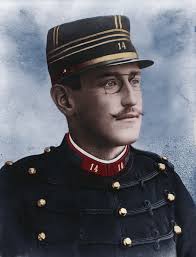
The political force of this antisemitism showed itself in 1897 with the election of Karl Lueger as mayor of Vienna, who was mentioned earlier. The antisemitism that was such a powerful force in central Europe also ignited the worst political crisis in France since the French Revolution, the Dreyfus Affair. Raging at the very time Lueger was making Vienna the most advanced city in Europe, the Dreyfus Affair threatened to destroy the French Republic. Spreading far beyond the issue of the guilt or innocence of Alfred Dreyfus, the Jewish officer charged with treason, it polarized the nation between supporters of the Republic, and those who would restore the pillars of the old order: Monarchy, Church, and Aristocracy.
With the spread of industrialism and its threat to agrarian and village life, there was a heightened urgency to demands that the influence of Jews be curbed. The prominent role of Jews in finance capital and speculation earned them blame for the scandals and crashes that dogged the era. Jewish prominence in the free professions of medicine, law, journalism and publishing all increased Jewish vulnerability to various charges of malfeasance. Add to this the persistence of the blood libel, and public depiction of Jews as pigs, goats, and devils; the stereotypes of greedy, conniving Jews proliferating in literature and fairy tales everywhere—the list goes on and on. The reality is that antisemitism had come to permeate the intellectual and cultural life of Europe. Its assumptions were widely shared across the political spectrum; general distaste for Jews was fashionable in high society; blatant antisemitism was articulated at all levels of culture, and freely expressed from church pulpits and in parliaments- including those of Canada.
But what was it about antisemitism in Germany that made the country ripe for a rabidly obsessive anti-Semite like Adolf Hitler? Israel’s most respected Holocaust historian once commented: “If people had been told in 1914 that within one generation most of the Jews of Europe would be murdered, their answer would most certainly have been: The French are capable of any crime.” The reason for this comment was that France was by far the most prolific producer and disseminator of antisemitic literature, purveyed by some of its most respected writers and intellectuals across the political spectrum; it was the home of repeated outbursts of vicious Jew-hatred, most notorious of which was the Dreyfus Affair, the likes of which had never been seen in Germany. The name Edouard-Adolphe Drumont (1844-1917) is synonymous with French antisemitism. In 1886 he published La France Juive. Its Index listed not only prominent Jews but all prominent figures having anything to do with Jews, implicating thousands in what many already believed was an inevitable national degeneration. Drumont provided a list of “hidden Jews” who had been masquerading as Frenchmen. Since antisemitism permeated every element of French culture and politics, there was no need for a specifically anti-Semitic party or movement. Antisemitism was simply a constant in culture and society.
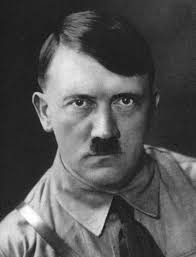
Germany was considered the safest country in Europe for Jews, and although antisemitism was certainly widespread, it hadn’t occasioned significant violence there since the revolutionary upheavals of 1848. So what happened? Why was the Holocaust “Made in Germany”? The answer is Adolf Hitler. There is a consensus amongst many historians: “No Hitler, No Holocaust.” Antisemitism was a necessary cause of the Holocaust, but it was not a sufficient cause. The Nazis were an insignificant bubble in the froth of discontent, for which people commonly blamed the Jews. In the years following World War I, Antisemitism was common currency in political discourse all over Europe. For Hitler, communism and capitalism were both Jewish conspiracies, and the major figures in both were all of them Jews, whether in Moscow or New York. During the 1920s, support for the Communists and Nazis grew, especially during the Great Depression. In 1932, 30% of the German labour force were unemployed, compared to 22.5% in the US and 24% in Canada. Even so, the Nazi victory was not inevitable. In late 1932 the party’s electoral support was declining. There were several other options available, and yet President Hindenburg chose to appoint Hitler Chancellor.
Hitler’s subsequent dismantling of German democracy is part of a complex political story involving far more than the antisemitism which was common everywhere. In any case, Hitler’s genocidal hatred of Jews was not wholly representative. Antisemites may have desired the exclusion of Jews, but not the annihilation of the Jewish people. While Hitler’s murderous fantasies were exceptional, he was able to gain control over the entire state apparatus necessary to realize them. And however extreme his views, their individual elements were available and accessible throughout the Christian West. Everywhere in Europe, the Nazis found accomplices in murder because their victims were Jews, everywhere the historical ‘other’. The Holocaust was the product of a pervasive antisemitism that, in the Nazi mind, placed the Jewish people outside the bounds of humanity, and marked them for extinction.
Features
Is This the End of Jewish Life in Western Countries?
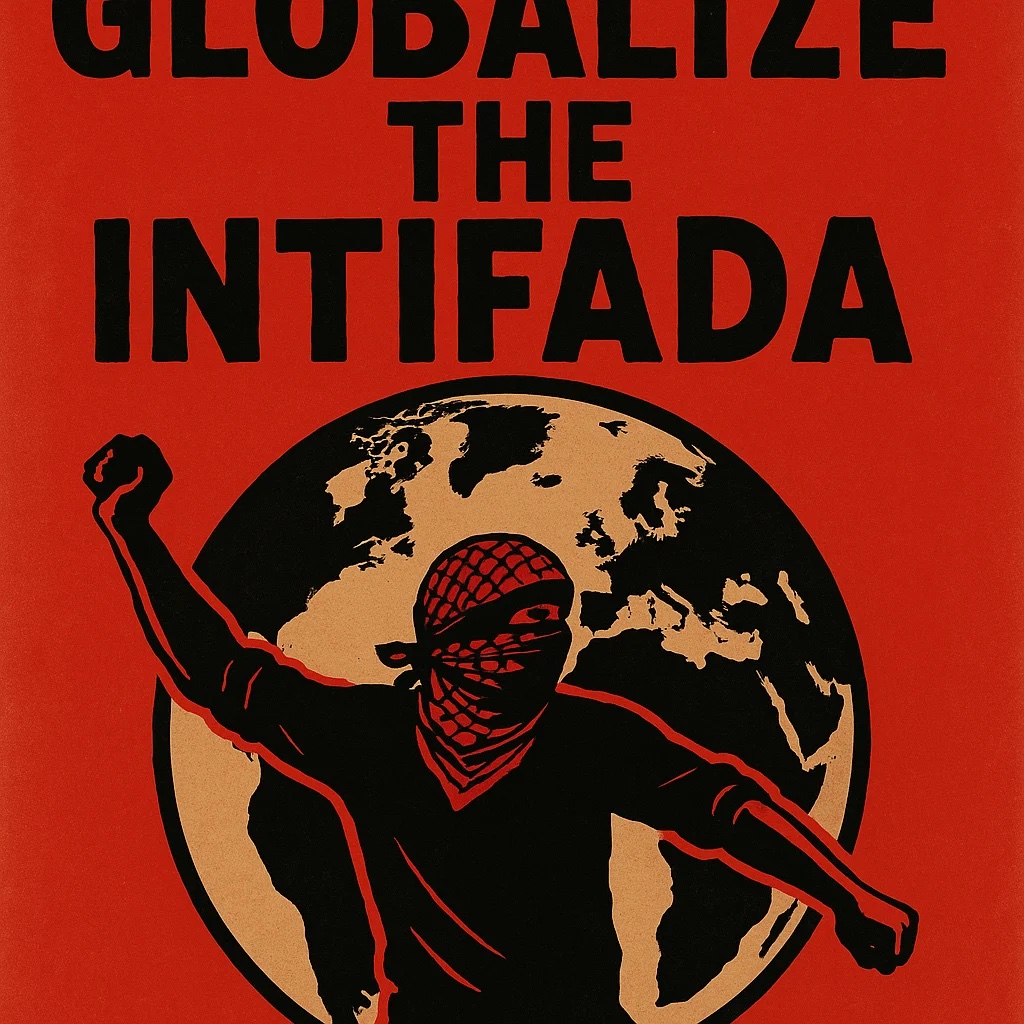
By HENRY SREBRNIK “Globalize the Intifada” has been the chant echoing through streets since October 7th, 2023. It was never a metaphor, and we now see the gruesome results across the western world, from Australia to Canada: the rise of groups of large, active networks of Islamist and anti-Zionist organizations.
Jews in the West are discovering that the nations they defended, enriched, and profoundly shaped have become increasingly inhospitable. After the Holocaust, explicit Jew-hatred became unfashionable in polite society, but the impulse never disappeared. The workaround was simple: separate Zionism from Judaism in name, then recycle every old anti-Jewish trope and pin it on “the Zionists.”
We have seen the full legitimization of genocidal anti-Zionism and its enthusiastic adoption by large segments of the public. The protests themselves, as they began immediately on October 7th, were celebrations of the Hamas massacres. The encampments, the building occupations, the harassment campaigns against Jewish students, the open calls for intifada, the attacks on Jews and Jewish places have become our new norm. History shows us that antisemitism does not respond to reason, incentive or the honest appeals of the Jewish community.
Outside the United States, there is no Western political establishment with either the will or the capability to address this problem, let alone reverse its growth. I’m sorry to say this, but the future of Western Europe, Canada, Australia, and New Zealand is likely to be increasingly Jew-free.
Today, police stand and watch mobs chant for Israel’s destruction, call for the genocide of its people, harass visibly Jewish citizens, and drive antisemitic intimidation deep into urban life. They now believe their job is to enforce the law only if it does not risk upsetting violent constituencies. This makes Jews expendable, because defending them risks confrontation. This was very clear in the Bondi Beach massacre.
Jews are again donning caps instead of kippot, dressing generically with no cultural markers, and avoiding even a tote bag with Hebrew on it. A corrosive creep toward informal segregation in retail and service sectors is occurring, as Jewish customers report being refused service. A mezuzah hanging from a rideshare mirror leads to cancellations. When Jews express frustration, they are accused of exaggeration or attempting to suppress criticism of Israel. Jewish fear is not treated as a real problem.
“Jews Are Being Sent Back into Hiding,” the title of a Dec. 15 article in the New York Free Press by David Wolpe and Deborah Lipstadt, asserts that the attacks on Jews, including physical assaults, social media campaigns and, most tragically, the recent murders in Australia, are part of a purposive campaign designed to make Jews think twice about gathering with other Jews, entering a synagogue, going to kosher restaurants, putting a mezuzah on the doorpost of their apartments or dorm rooms, or wearing a Jewish star around their necks.
“We know of no one who would consider giving a niece, nephew, grandchild, or young friend a Jewish star without first asking permission of their parents,” they write. The unspoken, and sometimes spoken, question is: “Might wearing a star endanger your child’s well-being?”
Recently, a prominent American rabbi was entering a Target store in Chicago with her grandson, whom she had picked up from his Jewish day school. As they walked into the store the 10-year-old reached up and automatically took off his kippah and put it in his pocket. Seeing his grandmother’s quizzical look, he explained: “Mommy wants me to do that.”
Borrowing a phrase from another form of bigotry, they contend that Jews are going “back into the closet.” No public celebration of Hanukkah took place in 2025 without a significant police presence. Some people chose to stay home.
Lipstadt and Wolpe know whereof they speak. They are respectively a professor of history and Holocaust studies who served as the Biden administration’s ambassador tasked with combating antisemitism, the other a rabbi who travels to Jewish communities throughout the world, and who served on Harvard’s antisemitism task force in the aftermath of the October 7, 2023 pogrom.
What the world has seen over the past two years is a continual, often systematic attempt to terrorize Jews. When political leaders fail to condemn rather than merely “discourage” chants of “globalize the intifada,” we are seeding the ground for massacres like the Hannukah one in Sydney.
If each Jewish holiday will now be seen by antisemites as an opportunity for terror, then the prognosis for diaspora Jewry is bleak. There will be fewer public events, more alarms, more bag checks at doors; there will have to be more security and more police. Unless things change, Jewish life in the diaspora will become more sealed off from the larger society.
Why has this failure come about? Confronting antisemitism, stopping the mobs, challenging the activists, and disciplining antisemitic bureaucrats all carry electoral risk for politicians; Jews are demographically irrelevant, especially compared with Muslim voters, with the U.S. being the only partial exception.
There are those who suggest Jews stop donating funds to educational and other institutions that have turned against us. At this point, I doubt very much that withdrawing dollars will have an impact. For every dollar withdrawn, there will be 100 from Qatar and other sources in its place.
Throughout history, the way a society treats its Jews predicts its future with unerring accuracy. If Jews leave, it will be because a civilization that will not defend its Jews will also defend next to nothing and may itself not survive.
Henry Srebrnik is a professor of political science at the University of Prince Edward Island
Features
Canadian Travel Trends 2025 and the Forecast for 2026

Canadians planning to travel in 2026 should keep an eye on shifting trends and learn what’s coming their way in the new year.
Canadian travel has seen a fair amount of change and instability over the last few years, thanks mostly to the country’s southern neighbours. In 2025, and likely into 2026, travel trends in the Great White North have stabilized significantly, with more Canadians than ever choosing to travel within their own borders. And with 2026 nipping at our heels, let’s take a look at what trends in 2025 have been the most prevalent and how these will shape travellers’ decisions and travel plans in the new year.
Canadian Travel in 2025
Thanks to many factors, including politics, inflation, and airline competition, the majority of travellers opted to explore their own country rather than go abroad in 2025. More local travel money is remaining within the local economy, further bolstering it and making it an even more attractive travel choice. Thanks to the accessibility of private jet charter travel across Canada, luxury local travel has increased as well, with more people looking to immerse themselves in luxury from the start of their journey to the end. When travelling abroad, the U.S. is now the least favoured destination for most Canadian travellers, but Europe saw a significant increase in interest as 2025 progressed.
As local Canadian travel increased this year, it brought with it a drive for local tourists to find their own “Secret Canada” destinations. Far more “off the beaten path” trips were taken, resulting in more travel spending going to smaller or more boutique destinations rather than big city experiences. In 2025, travellers have sought out the wonderful diversity in destinations and landscapes, allowing themselves to access more grounded and authentically Canadian experiences.
Canada’s Government has also encouraged and benefited from local tourism, with initiatives like the Canada Strong Pass offering extra benefits. Initially implemented in the summer, but reintroduced from December 12, 2025, until January 15, 2026, this is a ticket to enjoying the richness of their own culture (iconic natural destinations, museums, train trips) at a discounted rate or even in some cases free of charge.

In the second quarter of 2025, locals took a total of 90.6 million trips that included at least some time spent travelling domestically, which indicated a rise of 10.9% on a year-over-year basis. Of these trips, 58.6 million were day trip experiences (an increase of 12.4%), and 32.0 million were overnight trips or longer (an increase of 8.4%).
Between April and June of this year, Canadian residents spent $20.3 billion on local tourism, which represented a 13.5% year-over-year increase. When undertaking day trips, Canadians spent approximately $101 per visit. On overnight trips, locals spent around $449 per trip, with an average trip length of 2.6 nights. The Great White North is clearly holding its own, and then some, in the international travel market.
Canadian Travel in 2026
As we move towards 2026, many trends from 2025 will remain the standard, but some will evolve to fit changing demands. Across the board, though, the outlook for the coming year is that Canadian travel will become a far more personal thing, with trips being customized to fit travellers’ requirements and desires more closely than ever before. From choosing a hotel that they feel smacks of a beloved destination in their favourite novel, to taking a trip to a destination just to try a snack that’s famously made there and only there, travel is stretching and shifting for the traveller rather than the other way around.
Here are some slightly more specific predictions for the coming year based on the answers of polled Canadians.

- One Gen Z-led trend is the idea of “glowmad travel”. Beauty and skincare are now influencing the places that Gen Z travels, and their trips are far more likely to include visits to skincare and beauty destinations like spas and luxury stores.
- Gen Z adults are helping to drive another trend: family travel as a way to save money. 345 of Gen Z adults polled say that they would take this route.
- More than 70% of Canadians are considering some sort of mountainous getaway in 2026, specifically in summer or autumn.
- 48% of polled Canadians say they would book or consider a destination thanks to the influence of literature.
- More travellers than ever are choosing their destinations based on the accommodations available. 44% of polled travellers say that in 2026, accommodation and what it can offer comes first, and the surrounding destination comes second.
The World Is Your Nova Scotia Lobster Roll
Choose something a little different when you vacation this year. Oysters are great, but a Nova Scotia lobster roll might be more to your taste! Canadians know good travel, so take a maple leaf out of their book and experience something new this year.
Features
Fake IDs and Underage Bettors: The Growing Problem for Sportsbooks
The expansion of legalized sports betting worldwide has resulted in sportsbooks grappling with a problem that they can no longer overlook: the increase in underage individuals using counterfeit identification to place bets. As more and more ways to bet through mobile apps and online sign-ups emerge, minors who are set on their goal are inventing ways to get around age limits. The emergence of this trend is a breach of the law and morality; however, it is also an enormous problem that threatens the very existence of the platforms, which are forced to rigorously obey the regulations .
Why Fake IDs Are Becoming More Sophisticated
Conventional fakes used to be quite simple to recognize—low-quality printing, different fonts for the text, and inconsistent holograms would make them not very reliable for any kind of verification. But counterfeit documents have changed significantly over time. Nowadays, fakes are made better with the help of printing technology and software, and they can even copy barcodes and other scannable features, so their IDs look almost real.
This fact complicates things significantly for sportsbooks, especially those operating online. Most of the time, automated identity verification systems capture a user’s photo and perform basic data matching. In cases where a very good fake ID is used by a teenager who looks older, some systems cannot recognize the trick. Therefore, young bettors have found ways to be able to place wagers through these loopholes.
The Influence of Social Pressure and Online Culture
Social media is a major factor in the increase in risky behavior that minors are engaging in. On various platforms such as Instagram, TikTok, and Reddit, teenagers come across betting slips, parlay wins, and big-payout screenshots that are shared, most probably, by other users. The glamorization of sports betting is leading young people to copy the behavior of influencers, older friends, or even celebrities, as they think that it is the right thing to do.
The competitiveness usually associated with sports is one of the reasons some minors decide to bet on sports. For many, betting becomes another way to engage as a fan—by predicting outcomes, challenging friends, and experiencing the same excitement that adult fans enjoy. Unfortunately, only a small number of minors fully understand the financial risks involved, making them more vulnerable to developing harmful patterns that could continue into adulthood. This is why choosing the most responsible sportsbook, which you can discover more here, is essential. Such platforms provide guidance, enforce safe practices, and ensure regulated play, allowing fans to engage with sports betting in a more informed, secure, and controlled manner.
Sportsbooks Facing Regulatory Pressure
The sportsbooks are being given the task of more closely monitoring and preventing minors from betting on their platforms. If they fail, harsh penalties are possible, including severe fines, loss of a gambling license, and negative publicity that undermines a brand’s trustworthiness. As a result, it is becoming increasingly difficult for people to verify their identities, although this also inconveniences those who are, in fact, legitimate users.
Sportsbooks have to decide between two options that are in conflict with each other: on the one hand, they have to keep the registration process as simple as possible, and on the other hand, they have to carry out age verification in a very thorough manner. The work of balancing is tough, and the underage gamblers are trying all methods to find a way out.
The Rise of Identity Fraud Services
An alarming trend is the emergence of online vendors who openly advertise fake IDs and identity documents. These vendors often claim their products can pass standard sportsbook checks. Some even tailor IDs to specific regions, knowing that certain provinces, states, or countries use verification systems that rely heavily on image comparison rather than live validation.
The availability of these fraudulent services not only empowers minors but also exposes sportsbooks to risks related to stolen identities, money laundering flags, and fraudulent accounts that may later become legal liabilities.
The Consequences for Underage Bettors
While a minor might think that gambling is just a bit of fun without any harm, the outcome can be quite serious. If there is a catching, accounts are closed right away, winnings are confiscated, and parents or guardians, in some cases, are made legally liable for any financial disagreements. Besides that, the risk of developing a gambling problem in the future increases with early exposure to gambling, especially since teenagers are more impulsive and less capable of handling financial risks.
The majority of minors are not aware that sportsbooks keep very detailed records of their activities, including device information and IP addresses. In case a fake ID works one time, using it multiple times will definitely lead to getting caught.
A Growing Problem That Requires Joint Action
Fake IDs and underage betting are issues that have become a major challenge in the industry, and no single stakeholder can solve these problems on their own. Sportsbooks need to enhance their identity verifications, regulators should get prepared for new types of fraud, technology providers have to come up with new solutions more quickly, and parents should always be aware of what their children are doing online. The industry’s rapid development is making this problem more and more urgent because the number of minors trying to get around the safety measures is increasing.
Sports betting can serve as a fun and legal form of entertainment for adults, but the need to protect the youth is what defines the industry and ensures its survival in the long run. As the quality of fake IDs keeps improving and the online culture is more and more inclined to consider betting as a normal activity, sportsbooks must ensure that underage users do not have access and that the environment is safe for all users. They need to do this now more than ever.


